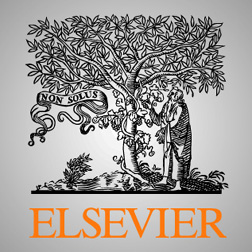دانلود ترجمه مقاله اپیدمیولوژی بیماریزایی و معاینه بالینی درماتیت هرپتی فرم – نشریه NCBI
| دانلود رایگان مقاله انگلیسی + خرید ترجمه فارسی
|
|
| عنوان فارسی مقاله: |
درماتیت هرپتی فرم
|
| عنوان انگلیسی مقاله: |
Dermatitis herpetiformisPart I. Epidemiology, pathogenesis, and clinical presentation |
|
|
| مشخصات مقاله انگلیسی (PDF) | |
| سال انتشار مقاله | ۲۰۱۱ |
| تعداد صفحات مقاله انگلیسی | ۸ صفحه با فرمت pdf |
| رشته های مرتبط با این مقاله | پزشکی و زیست شناسی |
| گرایش های مرتبط با این مقاله | پوست، اپیدمیولوژی، بهداشت حرفه ای، گوارش و کبد، علوم سلولی و مولکولی، علوم تغذیه، پزشکی مولكولی و باكتری شناسی پزشکی |
| مجله مربوطه | مجله دانشگاهی درماتولوژی آمریکا(Journal of the American Academy of Dermatology) |
| دانشگاه تهیه کننده | بخش پوست، دانشگاه شیکاگو، ایلینوی، ایالات متحده آمریکا |
| کلمات کلیدی این مقاله | بیماری بولوس اتوایمون، بلیستر، بیماری سلیاک، Dermatitis herpetiformis ؛ گلیادین؛ آنتروپاتی حساس به گلوتن، آنتی ژن لوکوسیت انسانی DQ2؛ آنتی ژن لوکوسیت انسانی DQ8؛ ترانس گلوتامیناز |
| رفرنس | دارد |
| لینک مقاله در سایت مرجع | لینک این مقاله در سایت NCBI |
| نشریه | NCBI |
| مشخصات و وضعیت ترجمه فارسی این مقاله (Word) | |
| تعداد صفحات ترجمه تایپ شده با فرمت ورد با قابلیت ویرایش و فونت ۱۴ B Nazanin | ۱۴ صفحه |
| ترجمه عناوین تصاویر | ترجمه شده است |
| درج تصاویر در فایل ترجمه | درج شده است |
- فهرست مطالب:
خلاصه
اپیدمیولوژی
پاتوژنسیس
ویژگی های بالینی
اختلالات مربوطه
- بخشی از ترجمه:
بیماری ادیسون به ندرت با DH ارتباط پیدا می کند.وقوع همزمان و مشترک ویتیلیگو و DH در شماری از کیس ها و سری ها نیز مشاهده شده است. alopecia areata که گفته می شود با ویتیلیگو و IDDM مرتبط است در ارتباط با DH نیز گزارش شده است.آخر از همه آنکه ، طبق گزارشات بیماری های بافت اتصالی اتوایمون از شیوع بالایی در بین بیماران DH برخوردار است. این بیماری ها شامل سندروم Sjogren، روماتوئید آرتریت و لوپوس اریتماتوس می باشد. اینکه آیا GFD خطر توسعۀ شرایط اتوایمون در بیماران مبتلا به DH را کاهش می دهد هنوز مشخص نیست.بیماران مبتلا به CD با افزایش osteoporosis و شکستگی استخوان (fracture) مواجه اند.با اینحال، با وجود اینکه DH متعلق به طیف CD است اما مطالعات تاکنون افزایش خطر شکستگی استخوان یا ناهنجاریهای استخوانی را در بیماران مبتلا به DH نشان داده اند.علیرغم اینکه این امر ممکن است به ویژگی های بالینی نسبتا ملایم CD مشاهده شده در اکثر بیماران مبتلا به DH نسبت داده شود، اما مطالعات بیشتر با تعداد بیماران بیشتری برای نتیجه گیری قطعی لازم است.در حالی که بیماران مبتلا به DH ظاهرا با افزایش مرگ و میر ناشی از بدخیمی ها مواجه نیستند، شماری از مطالعات خطر بالای لمفوم غیر Hodgkin را نشان داده اند. بستگان درجه یک بیماران مبتلا به DH با افزایش شیوع بافت لنفاوی مواجه نیستند. این افرایش نه تنها برای بافت لنفاوی سلول T مرتبط با آنتروپاتی که در گذشته تصور بر این بود که این بافت لنفاوی با CD ارتباط دارد رخ نمی دهد برای بلکه بافت لنفاوی سلول B نیز که ممکن است هم در داخل و هم خارج دستگاه گوارشی به عنوان یک بیماری گره ایی(nodal) یا خارج گره ایی(extranodal) رخ دهد نیز به وقوع نمی پیوندد.همچنان واضح و شفاف نیست که آیا پذیرش یک GFD در برابر توسعه و پیشرفت بافت لنفای در بیماران مبتلا به DH نقش حمایت دارد یا نه.
- بخشی از مقاله انگلیسی:
Dermatitis herpetiformis (DH) was initially described by Louis Duhring in 1884.1 Recent progress in understanding the pathogenesis of this disease has led to improved treatment. Linking gluten sensitivity to DH led to the adoption of the gluten-free diet as a key component of treatment. DH is an autoimmune disease, a finding that is strongly supported by landmark studies revealing the granular deposition of immunoglobulin in the skin.2,3 The immunologic basis of DH shows a clear relationship to celiac disease (CD). Both conditions are mediated by the immunoglobulin A (IgA) class of autoantibodies. Tissue transglutaminase (tTG) is the major autoantigen targeted in CD, and epidermal transglutaminase (eTG) is the autoantigen most closely linked to DH. IgA anti-eTG is the most sensitive serologic marker for DH. Many details about the immunologic basis and pathogenesis of DH are still emerging in the literature. Part I of this series will focus on the epidemiology, pathophysiology, and presentation of DH. EPIDEMIOLOGY Key points d Dermatitis herpetiformis is most prevalent in patients of Northern European descent d Men have a higher prevalence of dermatitis herpetiformis than women A number of epidemiologic studies have elucidated the incidence and prevalence of DH. Most of these studies focus on individuals of Northern European heritage, both in Europe and the United States, in whom this disorder is most common. Studies in these populations performed in the late 1970s to early 1980s report a prevalence range from 1.2 to 39.2 per 100,000 people and an incidence range of 0.4 to 2.6 per 100,000 people per year.4-8 In addition, a population-based study performed in Utah in 1992 documented a prevalence of 11.2 per 100,000 people and an incidence of 0.98 per 100,000 people per year, and both rates are comparable to studies performed in Europe.8 Because the population of Utah has a high proportion of people with Northern European ancestry, the concordance of this finding with previous studies is not surprising. The reported incidence of DH is also comparable to that reported for other immunobullous diseases, such as bullous pemphigoid and pemphigus vulgaris.9 A few studies in Asian populations have shown that DH is very rare among this group and even rarer among African Americans. In fact, so few cases have been described that no larger population-based studies have been reported in these ethnic groups.10,11 Although DH was not considered a familial condition for many years, that view is now changing because a number of genetic studies and epidemiologic reports have recorded familial cases of DH.12-14 The prevalence and presentation of DH varies geographically. Northern Europe appears to have the largest number of cases overall, but DH with onset in childhood tends to be more common in Mediterranean countries.15 This may be related to differences in diet or to a genetic predisposition within these populations. Males have a higher prevalence of DH.8 In fact, most population-based studies to date have found male to female ratios ranging from 1.5:1 to 2:1.8 Interestingly, the opposite is true of the prevalence of CD, with female to male ratios ranging from 2:1 to 4:1.16,17 Most patients report the onset of symptoms during the warmer months of the year, any time from spring to late summer.8 Whether this finding is related to the pathophysiology of the condition is unclear. The time of onset of DH is variable, with the most common age range at presentation being 30 to 40 years old; however, the age at diagnosis varies widely from infancy to the geriatric population.8,15 Childhood DH is rare, and for many years it was grouped with the diagnosis of linear IgA bullous dermatosis of childhood. Therefore, the true prevalence of childhood DH is not well characterized. PATHOGENESIS Key points d A strong genetic predisposition to dermatitis herpetiformis exists among affected families d Human leukocyte antigeneDQ2 and human leukocyte antigeneDQ8 are associated with dermatitis herpetiformis in humans and animal models d Gliadin modified by tissue transglutaminase, the major autoantigen in celiac disease, has a higher affinity for antigen-presenting cells expressing human leukocyte antigeneDQ2 d Epidermal transglutaminase appears to be the dominant autoantigen in dermatitis herpetiformis.
| دانلود رایگان مقاله انگلیسی + خرید ترجمه فارسی
|
|
| عنوان فارسی مقاله: |
درماتیت هرپتی فرم
|
| عنوان انگلیسی مقاله: |
Dermatitis herpetiformisPart I. Epidemiology, pathogenesis, and clinical presentation |
|
|



